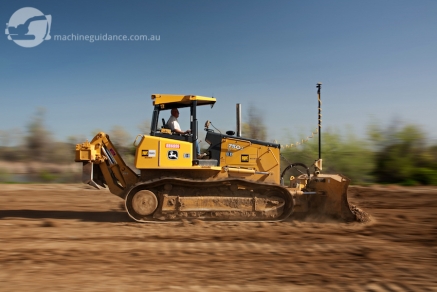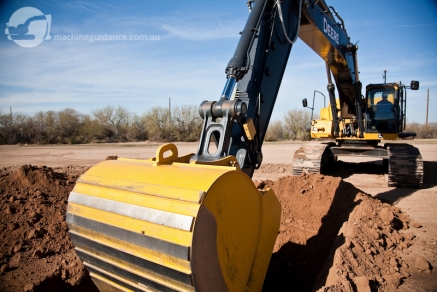An Introduction To Machine Control
As machine control becomes mainstream, more and more contractors are looking to take advantage. This article provides an introduction to the different systems, uses and contractor benefits of machine control technology.
Published: April 2018
Author: Position Partners

Intro
Machine control systems are now an everyday sight on construction sites. If you do not already use machine control systems, chances are that you soon will.
This technology is quickly becoming standard and contractors are realising that they need to implement this technology simply to stay competitive. Bidding a job now without factoring in the productivity gains from machine control is becoming increasingly difficult.
We hope this information will serve to educate the reader and assist those who are contemplating investing in machine control in making an informed decision. For those who are already using this technology, we will explore ways to maximise the utilisation and productivity of existing systems.
What are the benefits of using machine control systems?
Just a few years ago, contractors bought machine control systems to get a leg up on the competition. The increase in productivity achieved with machine control systems allowed contractors to greatly reduce their bids and still maintain a healthy profit.
Machine control systems allowed contractors to maintain tight tolerances which led to great material savings and the cost reduction cost of earthmoving operations. All of this added to the contractor’s bottom line.
What is the difference between machine control and 3D machine control systems?
While machine control systems have been around for a long time, they were previously limited to grading in a plane or following a physical reference such as a string line or curb and gutter. Today, the biggest excitement in the industry comes from the increased use of 3D machine control systems.
3D machine control systems are capable of grading complex surfaces such as super-elevated curves without the use of any pegs or string lines. This 3D technology was only introduced commercially in the past decade and has quickly become a necessity on large earthmoving projects.
Why are 3D machine control systems in such high demand?
Head contractors and project managers are increasingly specifying that subcontractors use this 3D machine control technology, that the requirement to use 3D machine control systems is trickling down to the subcontractor is no surprise.
The project owner wants to ensure that the job stays on schedule and that all work is done to specification. For this to happen, every stage in the construction process must stay on schedule, rework must be kept to a minimum and change orders must be executed ‘yesterday’.
3D machine control systems can assist with all of the above and help keep cost down at the same time.

High Demand 2
While the project owner gets his road built well, on time and to specification, other parties in the construction process also benefits from this technology.
Reducing rework (which often comes out of the contractor’s own pocket) is in itself a great thing, but this technology also helps the contactor to better use his fleet.
Reducing the number of passes to get to grade reduces both fuel and labour cost and reduces the wear on the machine. Increasing the productivity of each machine allows the contractors to use fewer machines on the job and keeping the grade as close to tolerance as possible generates great material savings.
The machine operator in turn also benefits by having a system that makes it easy for them to maintain grade, regardless of the conditions. Automated machine control manages the blade elevation for the operators and also gives steering indication.
This lets the operator focus on managing the material instead of the blade elevation, leading to less operator fatigue.
Why is the implementation of machine control becoming more common?
Lately, another issue has helped accelerate the implementation of machine control and 3D machine control systems: The construction industry skill-shortage.
As most of you are painfully aware of, a whole generation of master operators have either retired or are close to retirement and it has been difficult both to recruit and retain new machine operators.
Contractors worldwide have discovered that implementing machine control and 3D machine control systems on their sites not only lets their good operators do more, it also allows fine grading to be done with lesser-skilled operators.
With an automated machine, the time it takes for an operator to become proficient is greatly reduced and a shorter learning curve means less training cost.
Interestingly, Australia and New Zealand have been pioneers in developing machine control solutions. In fact, all the major manufacturers of these systems have research and development operations in Australasia.
The mining industry here has helped develop much of the underlying technology and the systems we use in construction today have a lot of things in common with the ones used in the mining sector. No doubt, our region will continue to play a very important role in the field of construction automation for a long time to come.
Credit Source
Article courtesy of Position Partners Machine Control e-News.
Return to Articles

